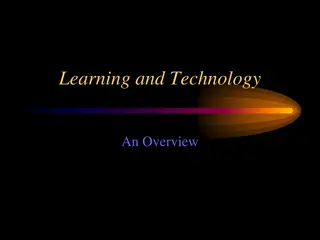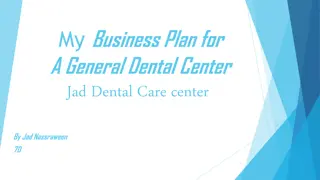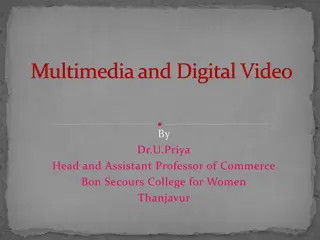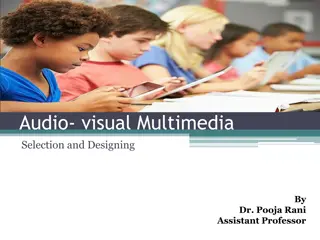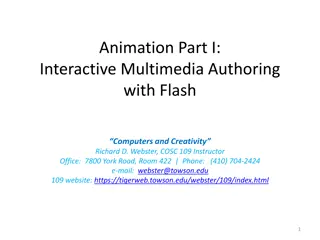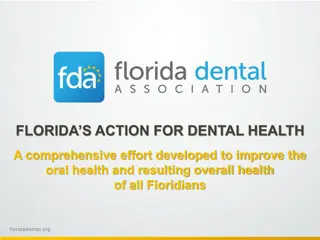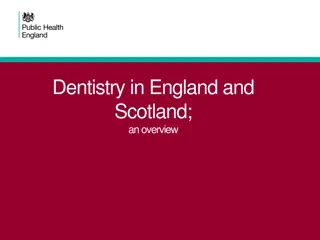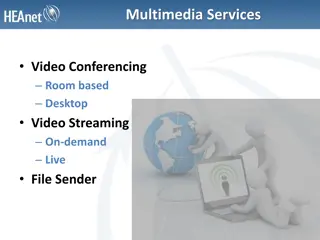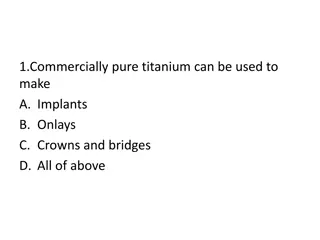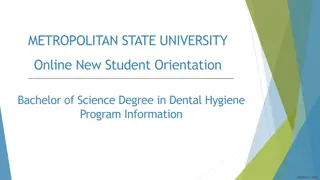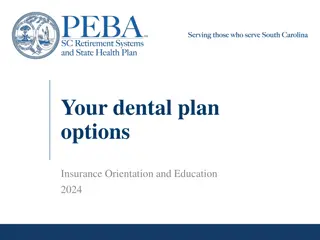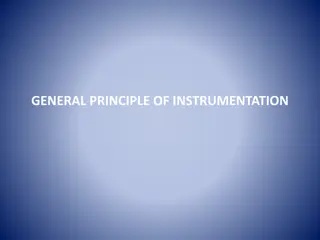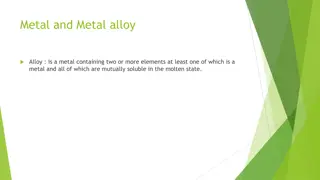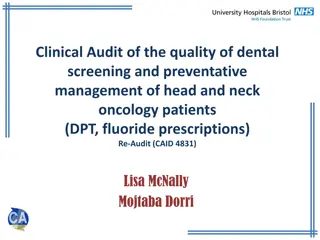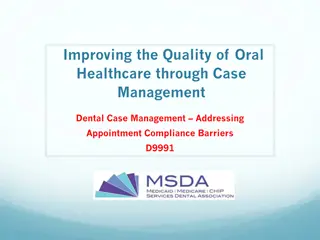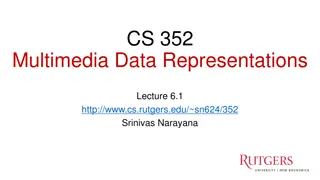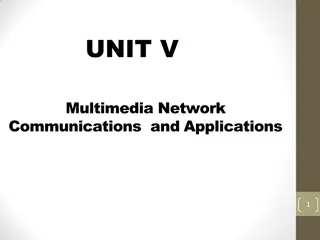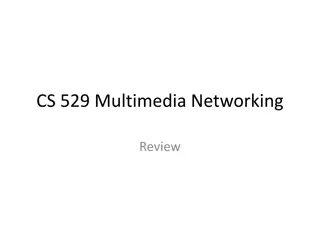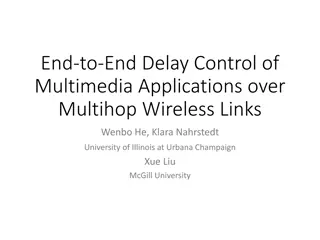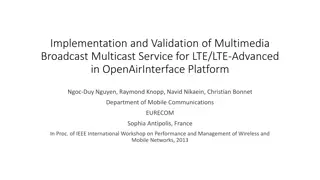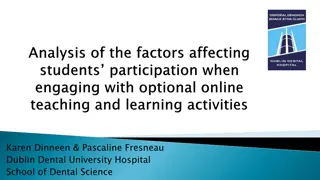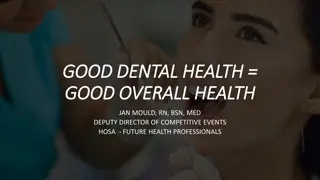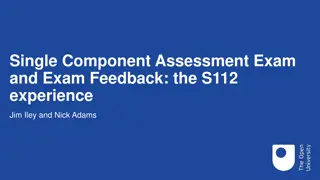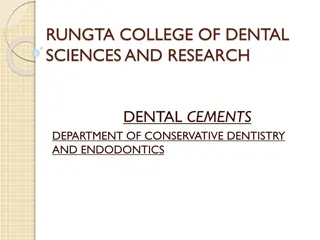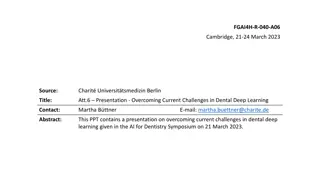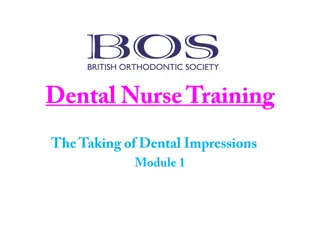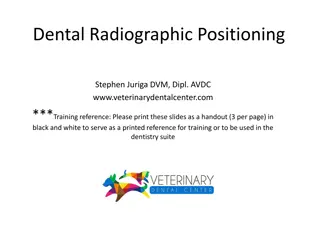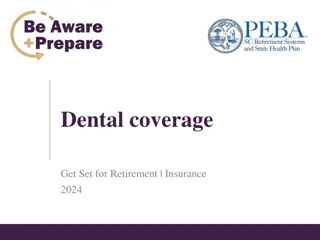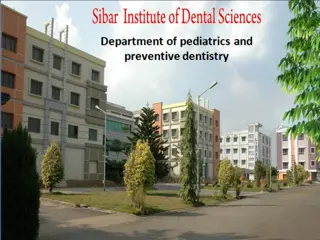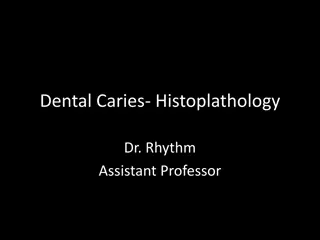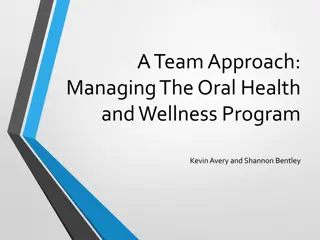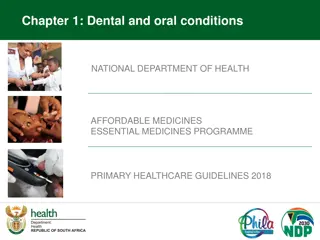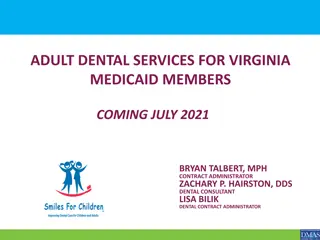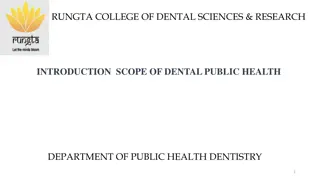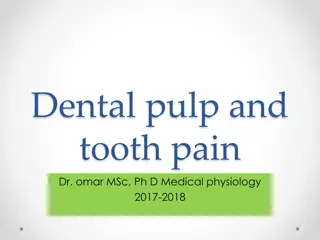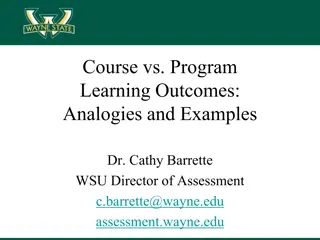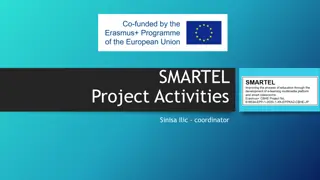Effects of Multimedia Module on Dental Students' Learning Outcomes
Current research explores the impact of a multimedia module on cognitive and affective learning outcomes among senior dental hygiene and dental assistant students. Findings reveal significant improvements in matching radiographic sets, knowledge of dental volunteer importance, and perceived knowledge after the intervention. The study underscores the effectiveness of multimedia interventions in enhancing learning outcomes for allied dental professionals.
Download Presentation

Please find below an Image/Link to download the presentation.
The content on the website is provided AS IS for your information and personal use only. It may not be sold, licensed, or shared on other websites without obtaining consent from the author. Download presentation by click this link. If you encounter any issues during the download, it is possible that the publisher has removed the file from their server.
E N D
Presentation Transcript
ALLIED DENTAL STUDENTS DVI LEARNING OUTCOMES FOLLOWING A MULTIMEDIA MODULE SAMANTHA VEST, MSDH BRENDA BRADSHAW, MSDH MARSHA VOELKER, BSDH ANN BRUHN, MSDH TARA NEWCOMB, MSDH SINJINI SIKDAR, PHD
PROBLEM Current literature lacks research on the effects of DVI learning interventions on cognitive and affective learning outcomes for allied dental professionals. 2
HYPOTHESES Senior level dental hygiene and dental assistant students will be able to accurately match at least 4 out of 5 AM and PM dental radiographic sets. There will be an increase of DVI match performance for dental hygiene students compared to dental assistant students. Participants will indicate an increase in perceived DVI knowledge upon completion of the multimedia learning experience. The participants will have an increase perception of the importance for their respective profession to volunteer in DVI after completing the learning experience. 3
METHODS Descriptive pre and posttest intervention study Qualtrics Surveys 3-point Likert-scale questions Cognitive knowledge of forensic odontology Cognitive knowledge of DVI Affective attitude regarding importance of professional involvement Multimedia learning experience intervention Post Survey Radiographic Comparison Match Assessment 4
RESULTS Demographics: Majority female, white, and between the ages of 18-22 years old 85.4% response rate Match Accuracy (Hypothesis #1) Accurately matched 5 out of 5 sets: (n=35, 85%) Statistically significant (p<0.05) 7
RESULTS Match Performance by Discipline (Hypothesis #2) Dental hygiene: (n=26, 99.96%) Dental assistant: (n=9, 55%) Fisher s Exact Test: statistically significant (p<0.05) Pre-Posttest Increase of Perceived Knowledge (Hypothesis #3) One-sided greater than type linear trend test Statistically Significant (p- value<0.0001) 8
RESULTS Perception of Professional Importance for DVI Volunteerism (Hypothesis #4) Dental hygiene: pretest (18.5%); posttest (77.8%) Dental assistant: pretest (35.7%); posttest (50%) Statistically significant (p<0.05) 9
CONCLUSION Dental hygiene and dental assistant students were able to apply foundational knowledge for transferable DVI skills. Allied dental students possess radiographic comparison skills which can aid in DVI. A DVI multimedia learning experience can increase learning outcomes for allied dental students. Higher perception of importance for future volunteerism in DVI 10


